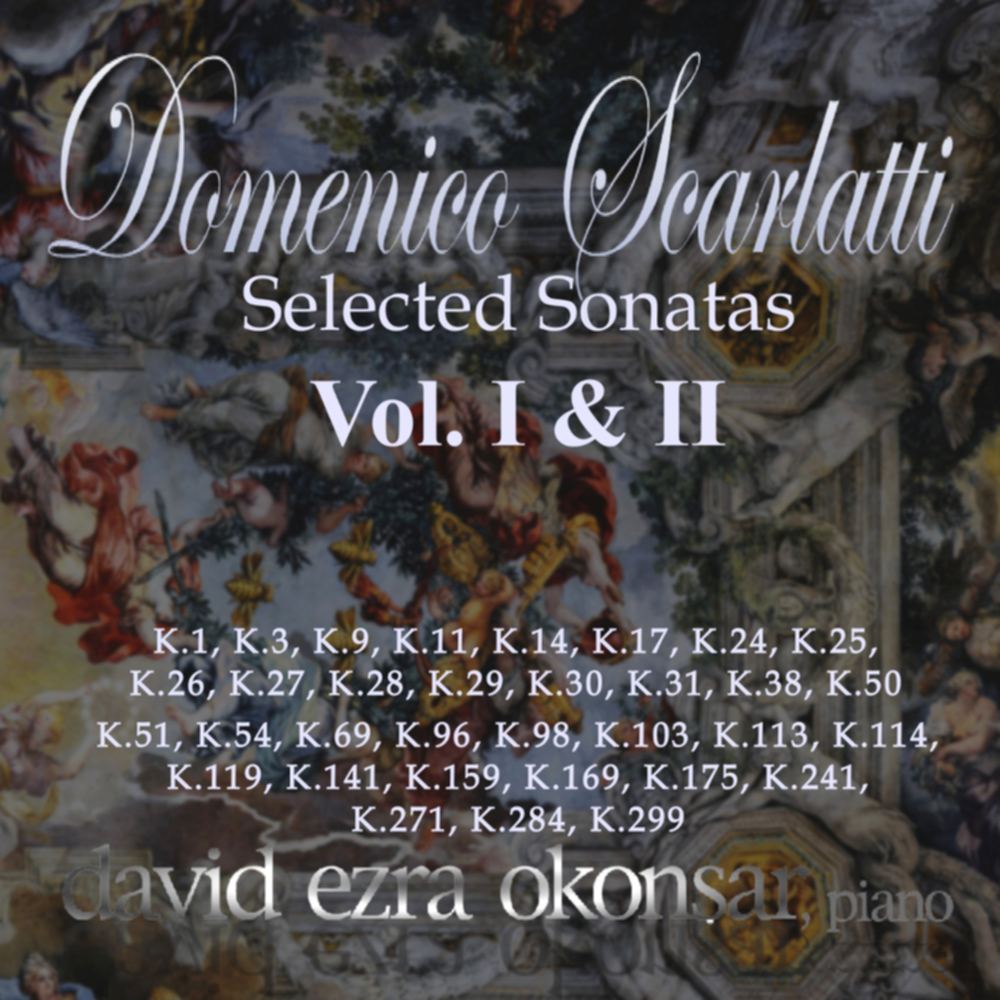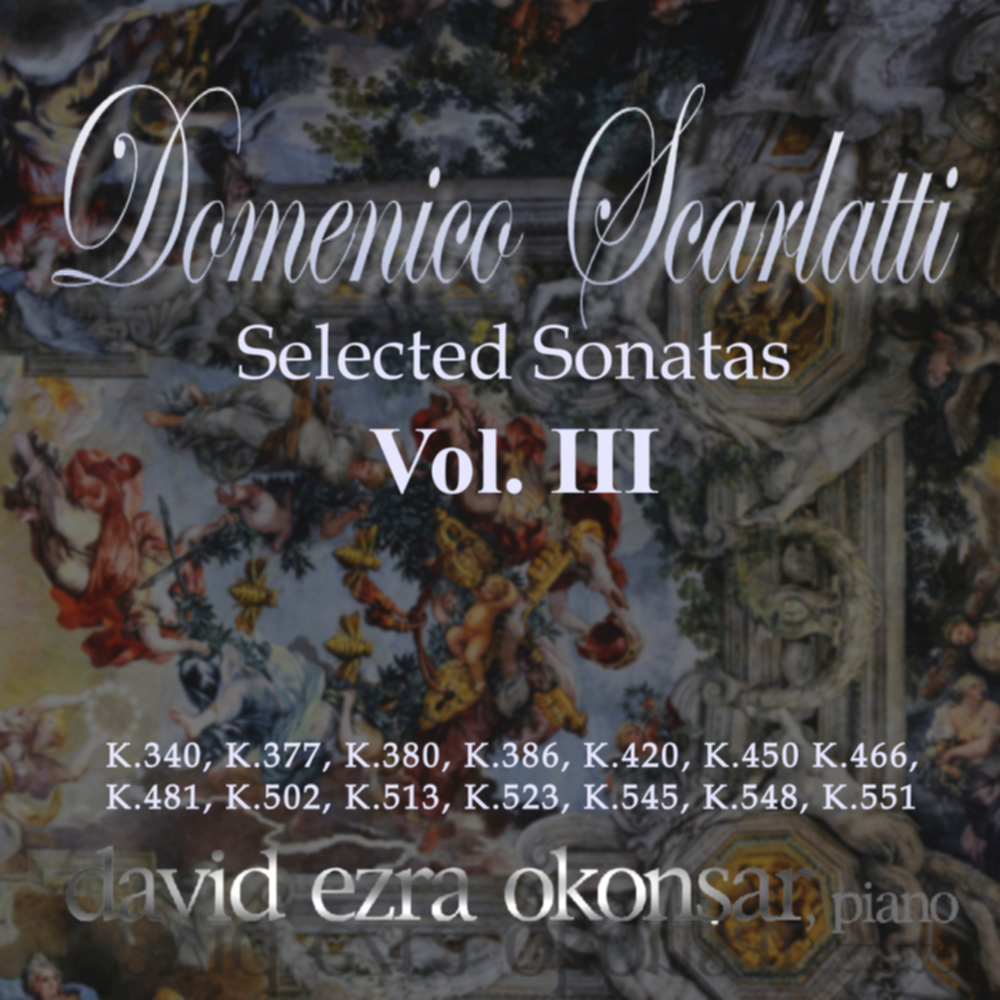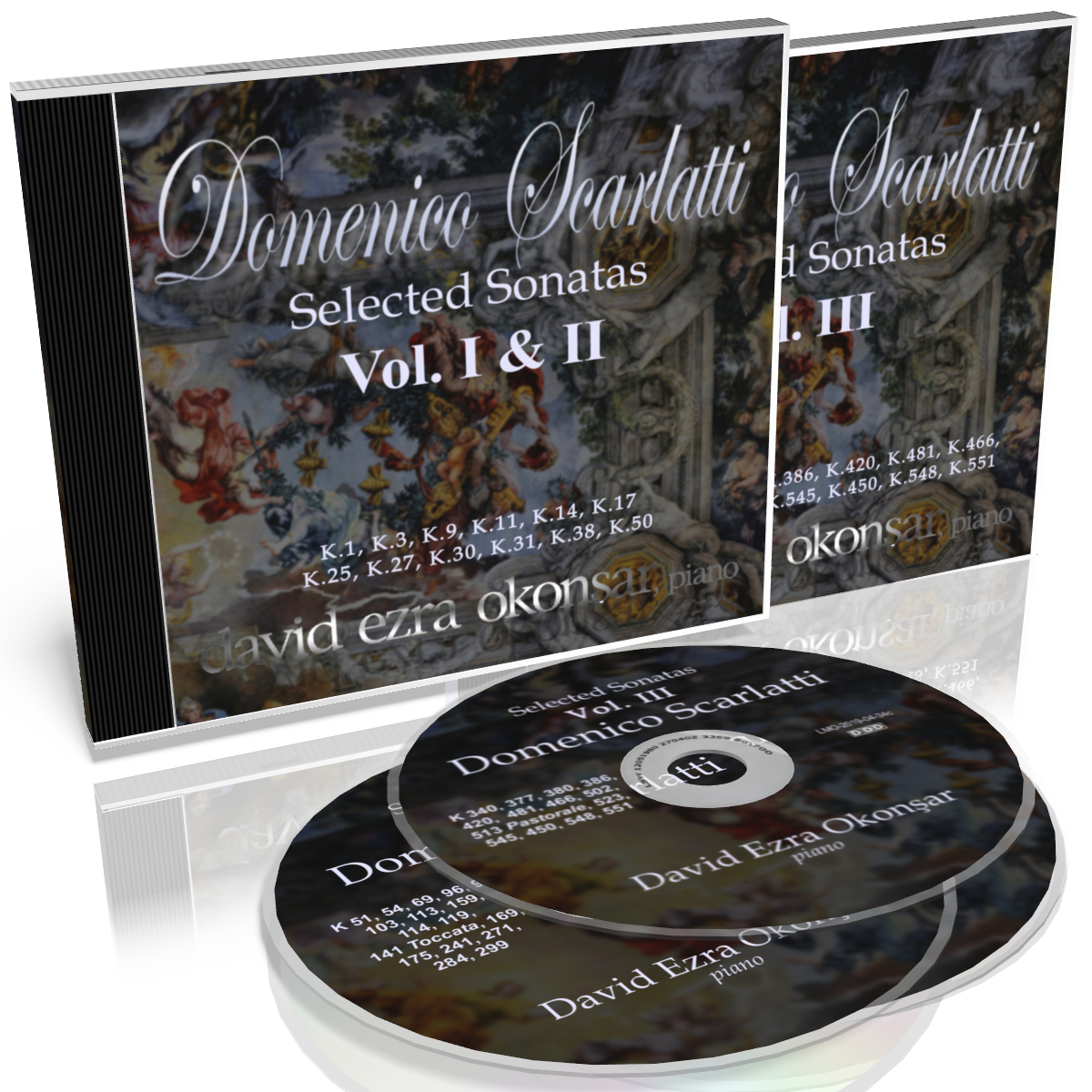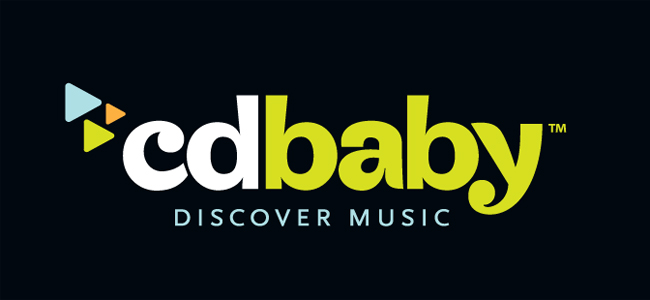


|
Scarlatti is an Italian artist set in Spain. The Italian musical tradition that he inherited from his father Alessandro (1660-1725) is melted by the guitar performances and popular rhythms of Spain. Scarlatti is also THE composer for harpsichord. From this instrument he cultivated all his life he will create countless new possibilities extract shockingly new sounds by his audacious écriture. Establishing a chronology for the Sonatas by Scarlatti is a difficult task. Only one collection was released during the lifetime of the composer, probably in London, in 1738 the famous "Essercizi per Clavicembalo". That is 30 sonatas dedicated to the King of Portugal. For the others only autographs survived. As most sonatas were circulating as hand copies all through Europe, where the reputation of the composer was firmly established, the most reliable guide we have today is the grandiose study by Ralph Kirkpatrick (Princeton University Press, 1983). Kirkpatrick's work is the result of twelve years of devoted effort and extensive travels to collect the material that has expanded knowledge about Scarlatti's life, providing the first adequate biography of one of the greatest harpsichord composers of the eighteenth century and one of the most original composers of all times. The book includes an illuminating study of Scarlatti's 555 sonatas, concluding with a chapter on their performance. The sources for Kirkpatrick's book are: 15 volumes of manuscripts covering 496 sonatas, hand copied in Spain for the queen Maria-Barbara, pupil of the composer and kept in the library Biblioteca Marciana of Venice. Two of those volumes are dated 1742 and 1749, addionally the British Museum has a manuscript from Spain, apparently contemporary of the Venice manuscripts, including 44 sonatas and 32 other sonatas are grouped in a manuscript kept in the Fitzwilliam Museum at Cambridge. It appears from these studies and comparisons that towards the end of his life, Scarlatti edited most of his work and hired copyists to re-write them. Also, more than half of his works are from the last periods of the composer's life. Only in the nineteenth century, important sets of his works were known by a large public. Carl Czerny was the first to endorse a substantial publication: in 1839 he edited and published some two hundred sonatas. About the same time Robert Schumann wrote this severe critic: "Scarlatti is, for many aspects, excellent. Even though an important historical position is held by his works, many of them do not please us and can not please us. How can we compare those pieces to [the work] of one of our best composer's [Bach?], with the musical form so crude, the melody neglected and the modulations poor." Alessandro Longo, in 1906 attempted a complete publication of the sonatas in ten volumes with an addendum: "Opere Complete per Clavicembalo di Domenico Scarlatti". Published in Milan by Ricordi, 545 sonatas were grouped and numbered with the prefix "L". However, this classification is arbitrary and follows more a tonal continuity rather than a chronological one. Much more accurate is the Ralph Kirkpatrick's edition (1953), which came with the previously mentioned book. This classification, prefixed "K" is chronologically the most precise. Sadly, none of the modern publications keep with the idea of the composer that his sonatas should be performed by pairs. We witness this organization by two in all manuscripts. Often between the sonatas making a pair, there are willingly established similitudes or contrasts. For instance: same tonality (K115 and K116); same key but major-minor (K394-K395); the development of the same melodic idea (K119-K120) or the development of the same harmonic framework (K308-K309). Sometimes it is the pairing of a slow one with a fast both in the same key (K132-K133). The sonatas are first published with the title: "Essercizi". Scarlatti never called them sonatas. Which name could be appropriate for them: sonatas; suites; studies? Some of them belong to more than one genre too, and their particular form is a very original creation by the composer. Most of them have in common a brilliant virtuoso écriture. Most of the time the formal structure is simple. Almost always they are in one single movement of two parts. The first part establishes the main key and progresses towards the dominant and the second part returns to the tonic. Unlike the classical sonata where the conclusive part is a return to the main motive in the tonic, the Scarlatti sonata does not re-exposes the main theme necessarily in the tonic key. One can not talk about a bi-thematic structure even though there are many examples of a kind of second theme appearing in the course of the Sonata. There are different kind of Scarlatti sonatas regarding the formal structure, some have only one theme, while others present two or more secondary motives that can nevertheless, hardly be qualified as second theme. According to Ralph Kirkpatrick, the "harmonic orientation" around a tonal axis, more than the thematic element itself, determines the formal structure of the Sonata. Scarlatti uses a tonal and harmonic language which may seem disorienting at first but is, after close examination, simpler than it appears. His harmonic vocabulary is quite simple too but it is used with surgical precision aimed for the desired sound effect. The usage of the dominant seventh chord on the tonic root is quite frequent as well as pedal tones, retarded resolutions, appoggiaturas, ornamentations and passing tones. Scarlatti evolves in strict tonal surroundings but switches heartily from major to minor and vice-versa. He commands masterly the art of modulation, assumably inspired by the guitar sounds, he hazards stunning dissonances. The design in Scarlatti Sonatas is very unique as well. His themes are short and crisp and his melodic and rhythmic creativeness is inexhaustible. He requires a fascinating virtuosity. Within a single Sonata he often unfolds a vast number of instrumental feats: hands crossing; large jumps; rhythmical overlapping; fast repeating keys; double thirds and sixths; trills and tremolos with more than one note; broken octaves in fast runs; glissando-like scales and many more. He has also a personal use of the "accaciatura", not to be confused with "appoggiatura", noted the same way in the old editions, where the accaciatura key must be pressed almost simultaneously with the main note. The accaciatura is also often used by French harpsichordists like Rameau and Couperin. This music is all about gaiety, cheerfulness together with a sense of grandeur that will impact to many composers: Francesco Durante; Baldassare Galuppi; padre Martini; padre Soler and later on, Muzio Clementi. Then rises the question of playing that music at the piano. What do we know about the instruments Scarlatti had around him? R. Kirkpatrick reports that the court of Madrid had in that time seven harpsichords and five piano-fortes. The composer knew the piano-forte perfectly well, yet we know that he preferred to compose, play and teach on the harpsichord. His favorite harpsichords had a very large keyboard range, 61 keys and two manuals, and two of the forte-pianos he used were modified and turned to be harpsichords! First one must note that the largest and best harpsichords of the time had much more power, keyboard span and possibly better actions than the early and surely imperfect pianos. The wide range of sound effects, the awesome fast and precise performance required by many Sonatas was undoubtedly impossible to realize on a new born, less than perfect instrument as was those piano-fortes. Comparing the piano-forte Scarlatti had before him and the modern piano would be "oranges and apples". However, the performance of the Sonatas on the (modern) piano, even if it can assuredly better convey the lyricism of those jewel-like pieces, must be guarded against the use of the pedal, too "fat" and shapeless bass sounds (chords and octaves) if held as notated, and it is the performers duty to adjust touch, speed and conception. The ornamentation as well must be suited to the (modern) piano. Only then, the Sonatas by Scarlatti may gain deepness, musicality and lyricism without loosing on brilliance, accuracy and sharpness when played on our days piano. |
|||||||||||||||||||||
|
|
|||||||||||||||||||||
|







